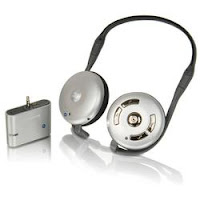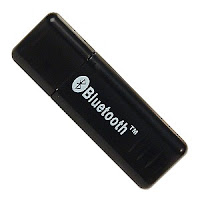Bluetooth is an industrial specification for wireless personal area networks (PANs).Bluetooth technology is how mobile phones, computers, and personal digital assistants (PDAs), not to mention a broad selection of other devices, can be easily interconnected using a short-range wireless connection. Using this technology, users can have all mobile and fixed computer devices be totally coordinated.

Basics
Bluetooth wireless technology is a short-range communications technology intended to replace the cables connecting portable and/or fixed devices while maintaining high levels of security. The key features of Bluetooth technology are robustness, low power, and low cost. The Bluetooth specification defines a uniform structure for a wide range of devices to connect and communicate with each other.

A fundamental Bluetooth wireless technology strength is the ability to simultaneously handle both data and voice transmissions. This enables users to enjoy variety of innovative solutions such as a hands-free headset for voice calls, printing and fax capabilities, and synchronizing PDA, laptop, and mobile phone applications to name a few.
System Requirements
Now a days we are having laptops and palmtops that are enabled with Bluetooth Technology.For desktops we need a device called Bluetooth Dongle to connect via bluetooth.We need to install drivers for it.Most computers require an external USB Bluetooth dongle to communicate with other Bluetooth devices (such as mobile phones, mice and keyboards).

Spectrum
Bluetooth technology operates in the unlicensed industrial, scientific and medical (ISM) band at 2.4 to 2.485 GHz, using a spread spectrum, frequency hopping, full-duplex signal at a nominal rate of 1600 hops/sec. The 2.4 GHz ISM band is available and unlicensed in most countries.
Operating Range
The operating range depends on the device class:
Class 3 radios – have a range of up to 1 meter or 3 feet
Class 2 radios – most commonly found in mobile devices – have a range of 10 meters or 30 feet
Class 1 radios – used primarily in industrial use cases – have a range of 100 meters or 300 feet
Data Rate
1 Mbps for Version 1.2; Up to 3 Mbps supported for Version 2.0 + EDR
Security
From the start, Bluetooth technology was designed with security needs in mind. Since it is globally available in the open 2.4 GHz ISM band, robustness was built in from the beginning.
Bluetooth technology has built-in security such as 128bit encryption and PIN code authentication. When Bluetooth products identify themselves, they use the PIN code the first time they connect. Once connected, always securely connected
Versions of Bluetooth
Bluetooth is also known as IEEE 802.15.1.
Bluetooth 1.0 and 1.0B
Bluetooth 1.1
Bluetooth 1.2
Bluetooth 2.0
Bluetooth 2.1
Health concerns
Bluetooth uses the microwave radio frequency spectrum in the 2.4 GHz to 2.4835 GHz range. Previous electromagnetic hazard studies dating from the 1950s to the 1980s, including more recent studies,concluded that low power signals with frequencies as high as 1.5 GHz to 2 GHz do cause irreversible damage to human tissue. The radiated output power of Bluetooth devices is high when compared to other widely used mobile devices, so it is assumed that the potential for health risks are also correspondingly higher.

1 comment:
thats very useful dude ... thnq very much for this
Post a Comment